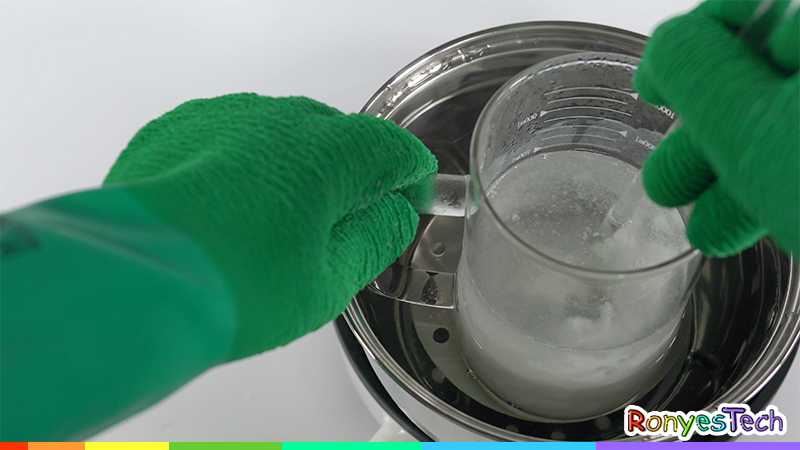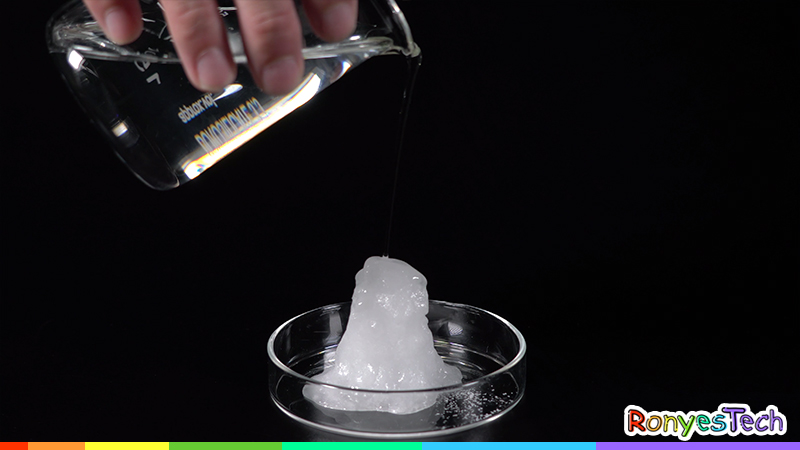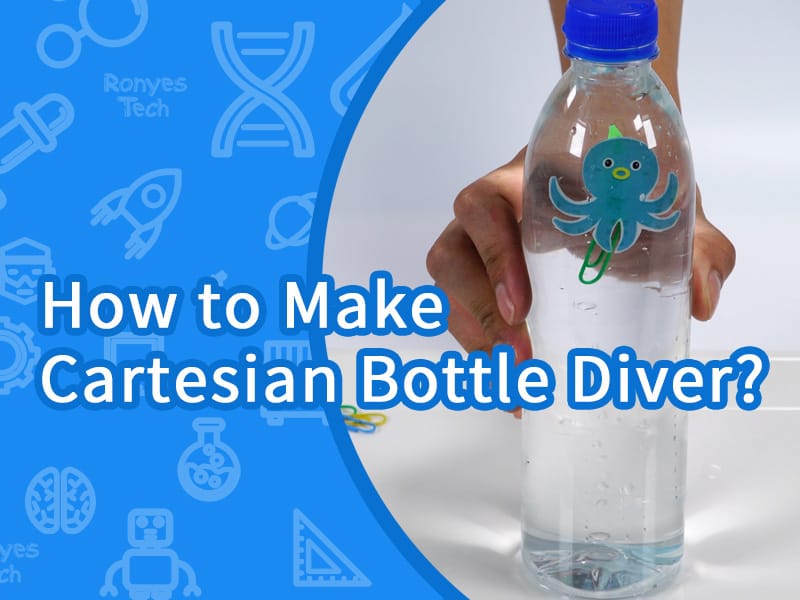Age: 5+ Time: <12h
Safety
- Adult supervision.
- Hot, be careful. It is recommended that adults perform the operation.
- Do not touch the chemical reagent.
- Wear gloves and goggles.
Materials List
- Anhydrous sodium acetate
- Water
- 200ml transparent glass (other transparent utensils can also be used, but must be clean)
- Glass rods
- Heater
- Pot
- Plastic wrap
- Insulated gloves
- Wooden sticks
Instruction
Step 1/3 – Add 150ml water and 150g anhydrous sodium acetate to a 200ml clear glass. Heat it, (It will be better using a water bath to heat) with a temperature above 80 ° C. Stir and dissolve it completely (be careful, wear heat-insulated gloves).Step 2/3 – Stop heating, seal the cup with plastic wrap, poke a few holes in the wrap, and cool it down to room temperature (or you can wait for a while to cool down a little and put it in the refrigerator to cool it, do not cool it when it is very hot for the glass is easy to break).
Step 3/3 – Here will be three ways to make it fun.
1. Cling a small amount of anhydrous sodium acetate powder to one end of the stick and take it into a glass. You can see that white crystal grows from the top of the stick end to the surroundings.
2. Put a small amount of anhydrous sodium acetate powder on the plate and slowly pour the solution onto the powder. When the liquid touches the powder, it will immediately turn to solid, forming an ice-like shape.
3. Sprinkle a small amount of anhydrous sodium acetate powder directly into the liquid, and you can see that crystal growing from several ends.
Troubleshooting
What should I do if the anhydrous sodium acetate powder is not completely dissolved?— It is mostly because the temperature is too low. The temperature of the solution inside the cup needs higher than 80 °C.
What if there is no anhydrous sodium acetate?
— Baking soda and vinegar can create anhydrous sodium acetate but it needs to evaporate water out of it and then you get the anhydrous sodium acetate. Sodium acetate trihydrate can also be a replacement.
Why does the solution solidify immediately after cooling?
— The solution is contaminated. The container and tools that contact with the solution must be clean enough. Too much dust in the air and vibrations can cause this too.
Question to Ask
- Can the same effects be achieved by using the hot anhydrous sodium acetate solution?
- Can you replace Anhydrous Sodium Acetate powder with other stuff?
- What is the difference between normal ice and the ice in this experiment?
Scientific Description
The principle behind this experiment is Supersaturation which is a solution that contains more of the dissolved material than what could be dissolved by the solvent under normal circumstances. Supersaturation is an unstable state. Any little vibration, dust, and nucleus will make the Supersaturation turn into solid immediately. When the pressure is constant, the solubility of anhydrous sodium acetate in this experiment increases with the increase of temperature. In this experiment, a sodium acetate supersaturated solution contacting with anhydrous sodium acetate powder which is used as a crystal nucleus. It crystallizes immediately, and crystallization releases heat ,forming a "hot ice" effect.Disposal
Hot ice is non-toxic and recycling. Pour the liquid into the sink and do not forget washing what you have used.
Hot to Do the Hot Ice Experiment
 Reviewed by Ronyes Tech
on
May 11, 2020
Rating:
Reviewed by Ronyes Tech
on
May 11, 2020
Rating:
 Reviewed by Ronyes Tech
on
May 11, 2020
Rating:
Reviewed by Ronyes Tech
on
May 11, 2020
Rating:










thx for the instructions. (:
ReplyDeleteThis project was awesome thank you
ReplyDelete